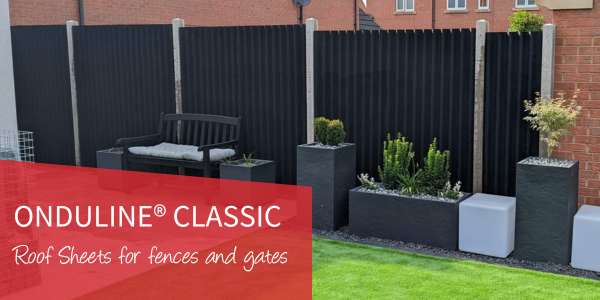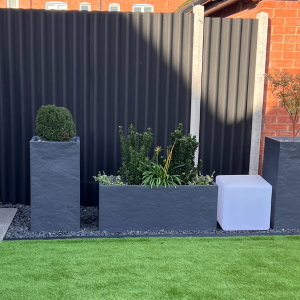When it comes to creating a stunning outdoor space, one of the biggest decisions you’ll face is choosing between composite and timber decking. Both options have their merits, but which one is truly superior? Traditionalists may argue that nothing beats the timeless beauty of real timber, while others are drawn to the low-maintenance and durability of composite decking. In this post, we will explore the pros and cons of each material to help you make an informed decision for your decking project. So, let’s dive in and compare composite and timber decking!

Natural Charm: Timber Decking
For many people, the allure of timber decking lies in its natural charm and character. The warmth and richness of real wood can lend a sense of authenticity to any outdoor space. Here are some key points to consider when it comes to timber decking:
- Versatility: Timber can be easily customized to suit your style preferences. Whether you prefer a stained finish or want to experiment with different paint colors, timber allows for greater flexibility in terms of aesthetics.
- Ageless Beauty: While composite materials attempt to mimic the look of wood, there’s simply no substitute for the real thing. Timber has a unique grain pattern and texture that exudes timeless appeal.
- Renewable Resource: If eco-friendliness is important to you, timber may be the way to go. Sustainably sourced timber decking ensures that you’re making a responsible choice for the environment.
However, it’s important to note that timber decking does come with some drawbacks. It requires regular maintenance such as varnishing or painting every few years to keep its appearance intact. Additionally, natural wood can be prone to warping or cracking over time if not properly cared for.

Low-Maintenance Durability: Composite Decking
If you’re looking for a decking material that requires minimal upkeep without compromising on durability, composite decking may be the answer. Here’s why it has gained popularity in recent years:
- Longevity: Composite decking is renowned for its exceptional durability. Unlike timber, it doesn’t rot, warp, or splinter, making it an ideal choice for high-traffic areas or regions with harsh weather conditions.
- Easy Maintenance: Unlike timber decking that requires regular staining or painting, composite decking only needs occasional cleaning with soap and water to keep it looking its best. This low-maintenance aspect is a major advantage for those who prefer to spend their time enjoying their outdoor space rather than maintaining it.
- Safety: One of the significant advantages of composite decking is its slip-resistant surface. This feature is especially important if you have children or elderly individuals using the deck.
While composite decking offers numerous benefits, some purists argue that it lacks the natural charm and authenticity of timber. However, modern composite materials have come a long way in terms of replicating the look and feel of real wood, often featuring realistic grain patterns and textures.
Weather Resistance: Composite Decking Shines
When it comes to weather resistance, composite decking has a clear advantage over timber. Here’s why:
- Moisture Resistance: Timber decking can absorb moisture over time, causing warping or rotting. In contrast, composite materials are engineered to be highly resistant to moisture damage.
- UV Protection: Constant exposure to sunlight can cause timber decking to fade and lose its color over time. Composite materials are designed with UV protection, ensuring that your deck retains its vibrant appearance for years to come.
- Insect and Pest Resistance: Timber can attract insects and pests such as termites or carpenter ants that can wreak havoc on your deck. Composite materials are impervious to these unwanted guests.
It’s worth noting that while timber requires regular maintenance to combat these issues, composite decking maintains its integrity without the need for constant upkeep.
Aesthetics and Customization Options
Both composite and timber decking offer a variety of aesthetic options to suit your personal style. Here’s what you need to know:
- Composite Decking: In recent years, manufacturers have made tremendous strides in creating composite materials that closely resemble the look of real wood. Whether you prefer the appearance of tropical hardwoods or rustic timber, there’s a composite deck option that can mimic your desired aesthetic.
- Timber Decking: The natural beauty and warmth of timber cannot be replicated perfectly by any other material. From classic hardwoods like cedar or redwood to exotic choices like tigerwood or teak, timber decking offers an extensive range of colours, grains, and finishes.
Ultimately, the choice between composite and timber decking boils down to personal preference. If you prioritize low maintenance, durability, and weather resistance, composite decking may be the best fit for your needs. However, if you appreciate the unique beauty and character of real wood and are willing to invest time in its maintenance, timber decking can create a timeless outdoor space.
Environmental Considerations
As our society becomes increasingly conscious of environmental impact, it is essential to consider sustainability when choosing materials for our projects. Here’s how each option fares:
- Composite Decking: Composite materials are typically made from recycled plastics and reclaimed wood fibers. By opting for composite decking, you contribute to reducing waste while enjoying a long-lasting product.
- Timber Decking: Sustainably sourced timber ensures that forests are managed responsibly and trees are replanted. Choosing certified timber products supports sustainable forestry practices.
When it comes to environmental considerations, both options have their merits. Ultimately, it’s important to choose a supplier with transparent sourcing practices for either composite or timber decking.
Conclusion: Making Your Choice
Choosing between composite and timber decking ultimately comes down to your priorities and preferences. If you value low maintenance, durability against harsh weather conditions, and a wide range of colors, composite decking may be the way to go. On the other hand, if you appreciate the natural beauty of real wood and are willing to invest time in its maintenance, timber decking can create a timeless outdoor space.
Consider factors such as aesthetics, durability, maintenance requirements, and environmental impact when making your decision. Whichever option you choose, investing in quality materials and professional installation will ensure that your deck becomes a beautiful extension of your home where cherished memories are made.







